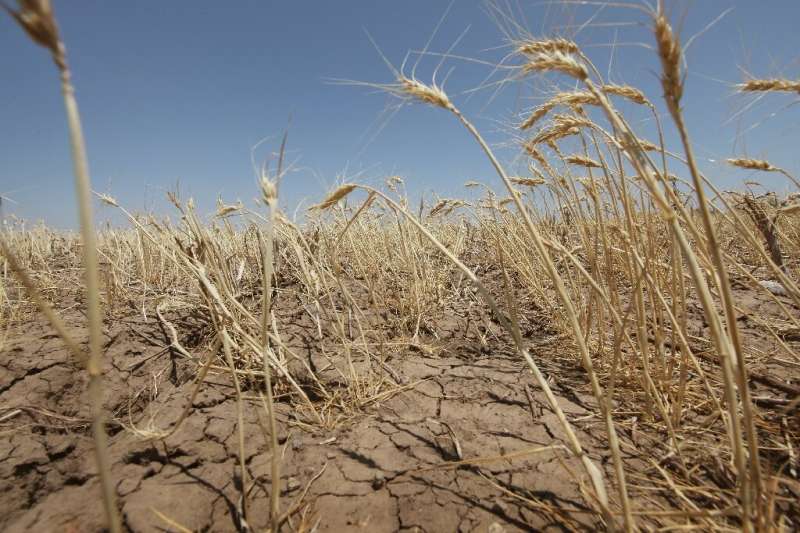
Climate change is causing more frequent and extreme weather extremes.
The dangers of crop failures in many global breadbaskets have been underestimated, according to a study Tuesday that researchers say calls for a “wake-up” about the threat of climate change to our food systems. food
Food production is both a major source of planet-warming emissions and is increasingly exposed to the effects of climate change, with climate and crop models being used to predict what could be impact as the world warms.
In new research published in the Communication in Natureresearchers in the United States and Germany see the possibility that many large food-producing regions will simultaneously suffer low yields.
These events could lead to price increases, food insecurity and even civil unrest, said lead author Kai Kornhuber, a researcher at Columbia University and the German Council on Foreign Relations.
By “increasing the concentration of greenhouse gases, we are entering these uncharted waters where we are struggling to really have an accurate idea of what kind of extremes we are dealing with,” he said to AFP.
“We show that these types of parallel events are greatly underestimated.”
The study looked at observational and model climate data between 1960 and 2014, and then at projections for 2045 to 2099.
The researchers first looked at the effect of the jet stream—the air currents that drive weather patterns in many of the world’s most important crop-producing regions.
They found that a “sharp bend” in the jet stream, which flows in large wave forms, had particularly significant effects on the prime agricultural regions of North America, Eastern Europe and East Asia, with reduced yields of up to seven percent.
The researchers also found that it was linked to simultaneous crop failures in the past.
An example was in 2010, when fluctuations in the jet stream were linked to extreme heat in parts of Russia and devastating floods in Pakistan, both of which damaged crops, Kornhuber said.
Risk assessment
The study also looked at how well computer models assessed these risks and found that while they were good at showing the atmospheric movement of the jet stream, they underestimated the magnitude of the extremes produced. of it on earth.
Kornhuber said the study should be “a wake-up call in terms of our uncertainties” in the effects of climate change on the food sector, with more frequent and severe extremes time and more complex combinations of residues.
“We need to be prepared for these kinds of complex climate risks in the future and the models so far don’t seem to capture them,” he said.
On Monday, United Nations human rights chief Volker Turk warned of a “truly terrifying” dystopian future of hunger and suffering as extremes fueled by climate change hit crops. , livestock and important ecosystems.
He told a UN debate on the right to food that more than 828 million people face hunger in 2021 and climate change could increase that to 80 million by mid-century, and criticized world leaders for short-term thinking.
More information:
Kai Kornhuber, Risks of combined low yields underestimated by climate and crop model projections, Communication in Nature (2023). DOI: 10.1038/s41467-023-38906-7. www.nature.com/articles/s41467-023-38906-7
© 2023 AFP
Citation: We may be underestimating climate risk to crops: researchers (2023, July 4) retrieved July 4, 2023 from https://phys.org/news/2023-07-underestimating-climate-crops.html
This document is subject to copyright. Except for any fair dealing for the purpose of private study or research, no part may be reproduced without written permission. Content is provided for informational purposes only.
